Perfect Tempura Recipe Secrets - Cold Flour, Less Gluten Softens the Batter
Many people have been disappointed with their home made tempura, which has turned out tough, soggy or doughy. Most have blamed the kind of oil they used or the temperature in the deep fryer. Perhaps adding too many items to the deep fryer reduced the oil temperature below the ideal threshold.
Domestic fryers and kitchen stoves may not have enough heating power to keep the oil above the critical temperature. Well there is good news. It is unlikely to be the oil temperature in most cases. The secret has finally been revealed!
The secret lies with the gluten in the flour. This protein in wheat flour is what gives a pasta, pizza and bread dough its strength an elasticity enabling a 'noble' rise.
But for tempura, the less the gluten is developed, the lighter the batter and the better it is cooked.
Freezing the dry flour overnight and using cold ingredients when it is mixed, inhibits the formation of gluten in the batter which remains fluid. Minimal mixing of the batter also helps.
Time to give tempura another try with this and other secrets revealed.
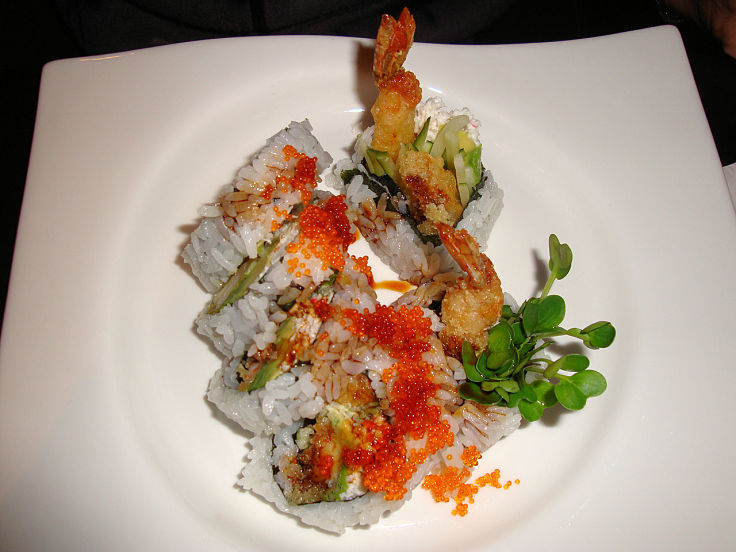
Secret Tips for Making Perfect Tempura
=> Cooking Oil for Deep Frying Tempura
Cooking oils can impart flavor which could be desirable or undesirable. The best option is to choose a high smoke point oil with a neutral taste such as Rice Bran Oil, Grape Seed Oil, Peanut Oil or Light Olive Oil that has been modified so it has a high smoke point. Blended vegetable oils and standard olive oils are risky and may taint the tempura.
You need a relatively high volume of oil so that the temperature does not drop when you add the battered items to fry. Monitoring the temperate and having a stove element, gas burner or electrical deep fryer with a high power capacity are essential for cooking tempura that is crisp and not soggy.
The ideal oil temperature for deep-frying tempura is 375 degrees F (190 degrees C). Cook the tempura in small batches. Watching how much the temperature drops when you add items to be fried, will show you how many items in a batch your system can handle.
=> Does the Egg Matter?
The egg adds flavor and binding to the batter. But, the yolk tends to soften the batter and may leave the tempura less crisp. It appears that most experts favor including eggs, but some leave out the yolks after the first egg has been added for flavor. The more egg that is added to the batter, the softer it will become so use eggs, especially the yolks sparingly.
=> Is Leavening Needed?
The original recipe for Japanese tempura only had three ingredients: flour, egg and water. Leavening adds height and puff, but not necessarily crunch and increases the risk that the batter will be soggy. On the other had adding a small amount of leavening can soften the coating with some flours.
=> The Flour
There is much debate about this, Wheat flour provides good flavor and texture, but can get soggy fast if conditions are less than ideal. Using low-gluten wheat flour is a good idea, but gluten-free flour is overdoing it. Adding some cornstarch helps to keep the coating crisp. It is essential not to over mix the batter or the gluten will be activated leading to chewy batter that is not crisp. The flour should be chilled in the freezer overnight. The other ingredients should also be cold. A cold batter inhibits the development of the gluten in the flour
=> Water and Liquids
The only liquid ingredient in tempura batter should be water that is ice cold water. Also you should place the mixing bowl used to prepare then batter in a bowl filled with crushed ice to keep the batter cold. The reason for this is to understand how the batter reacts to the hot oil. If the batter is cold, the outside of the batter will cook, sear and seal the outer layer of the batter stopping the inside from absorbing oil.
=> Cooking and Handling the Tempura
The tempura should be cooked until crisp, but not browned. Timing is very important. Work is small batches using chop sticks to rotate the items in the oil. Use a wire spoon to quickly remove each item when cooked. Drain on a paper towels. Keep the oil clean by scooping out any stray bits that will brown and burn, tainting the oil. One batch of oil can only be used to cook one batch of tempura.
Recipe for Perfect Tempura
Ingredients
Gather your favorite ingredients, such as shiitake mushrooms, scallops, oysters, sweet potato slices, firm white fish, prawns, eggplant slices and other vegetables and various other items.
Try to keep the sizes even, as this simplifies the cooking as all items will cook in about the same time.
- 8 cups high smoke point oil such as Rice Bran Oil, Grapeseed oil, Peanut oil or Light Olive Oil (modified for frying)
- 2 cups good quality, low-gluten wheat flour, plus extra for dusting (Optional: replace 1/4 cup of the wheat flour with cornflour)
- 1/2 teaspoon baking soda (optional)
- 1 egg
- 2 cups
- 5 ice cubes
Method
You will need to begin this process the day before to thoroughly chill the flour. Sift the flour onto a shallow tray or dish with a lid and place in a frost-free freezer overnight. Heat the oil in a large, deep saucepan to the correct temperature using a thermometer. Or you can use an electric deep fryer with a thermostat. Choose one with a high amp rating to ensure it can heat the oil quickly after each batch is added. Remember that the batter is cold and keep the batches small. The ideal temperature for items that cook very quickly, such as fish and other seafood, is 375 degrees F (190 degrees C). For vegetables, especially larger and thick items you can use lower temperatures such as 330 degrees F (165 degrees C). Otherwise, the batter will be crisp but the contents will be uncooked. Slice and prepare the vegetables so that the items are thin so that they can be cooked at the higher temperature. This means that it is best to cook the seafood and vegetables in separate batches.
Make the tempura batter liquid in a bowl resting on ice. Mix the cold egg, water and ice cubes in a jug until well combined. Make the batter in small portions as needed so that it is always fresh. Add a little of the egg mixture to a small bowl. Sift in some of the chilled flour and mix stirring only very lightly to combine. The batter may still be lumpy but this does not matter. Resist the temptation to over mix the matter to remove the lumps.
Lightly dust the filling items, such as prawns or vegetables with flour, shaking off any excess. Then, lightly dip each piece into the batter using chop sticks. Lift each piece above the batter and allow most of the batter to drip away. Then, add the items to the hot oil at the right temperature. Flip each item in the oil using chop sticks to ensure it cooks evenly. Use a wire mesh spoon to quickly skim the oil to remove any stray batter bits. Only add small batches of items to the oil at any one time. When each item cooked and crisp, but not browned remove from the oil and place on a wire rack or colander covered with paper towels. Serve immediately.
Conclusion
The secrets of making perfect tempura are
► Keep the ingredients ice cold, freeze the dry flour overnight
► Use low gluten flour
► Use minimal mixing to lessen gluten development
► Keep all ingredients very cold, replacing some of the water with ice cubes and insert the mixing bowl in ice
► Learn the ideal batch size for your deep fryer or stove heating a wok or pan so that the ideal temperature is keep at 375 degrees F (190 degrees C) when cooking. Remove any stray batter bits immediately to stop them burning and tainting the oil
► Use a neutral tasting oil with a high smoke point temperature such as rice bran oil, grapeseed oil, peanut oil or a modified light olive oil designed for frying,
► Fry the seafood, fish and other quick cooking items separately from the hard vegetables that take longer to cook.
► Drain the cooked tempura using paper towels and serve immediately, or as quickly as possible





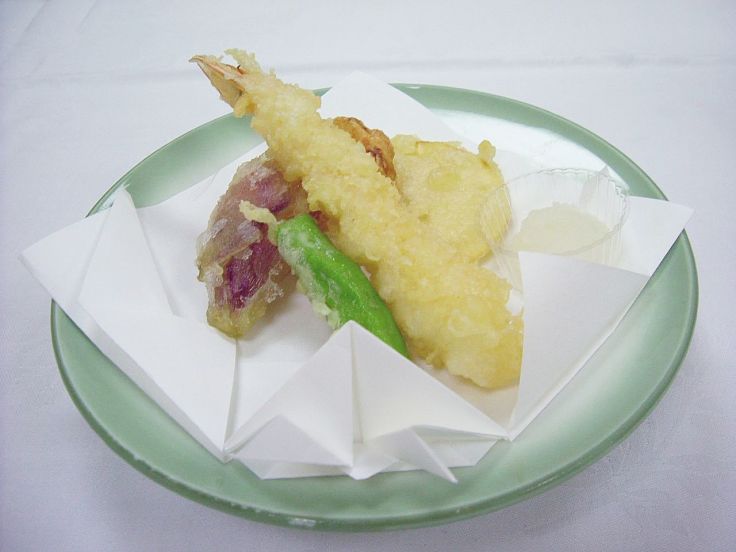
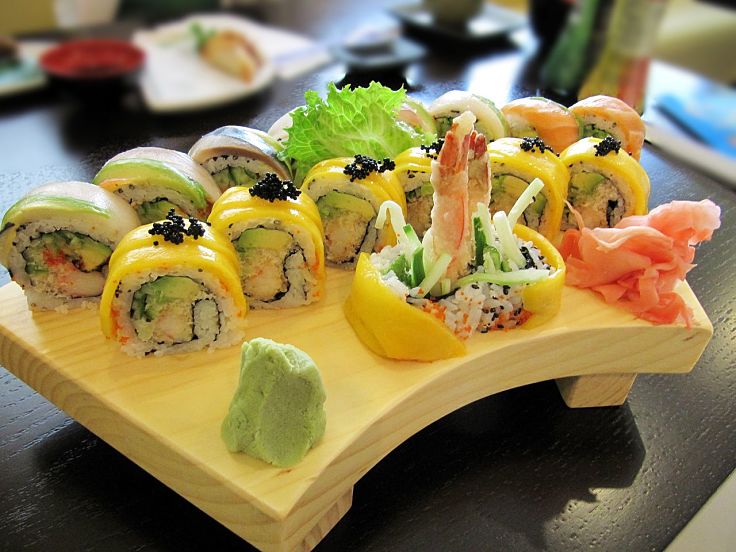
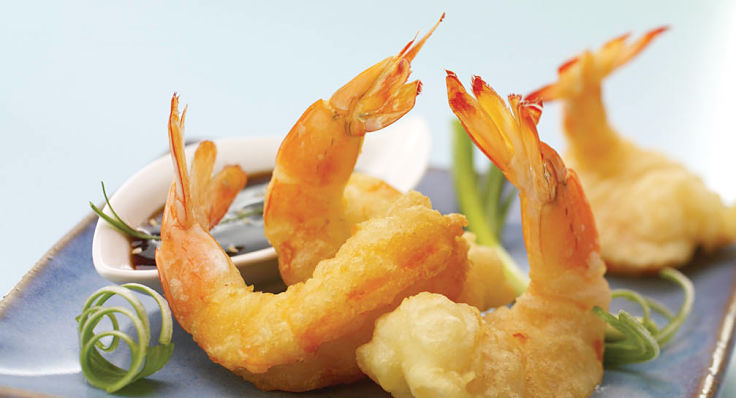
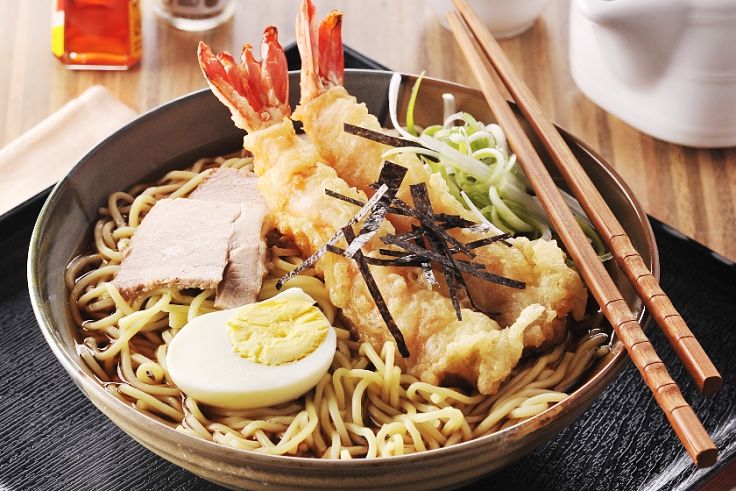
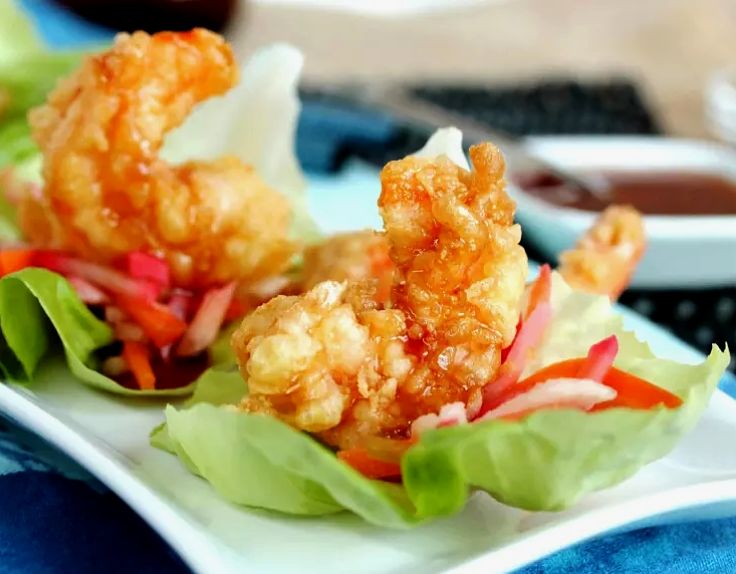
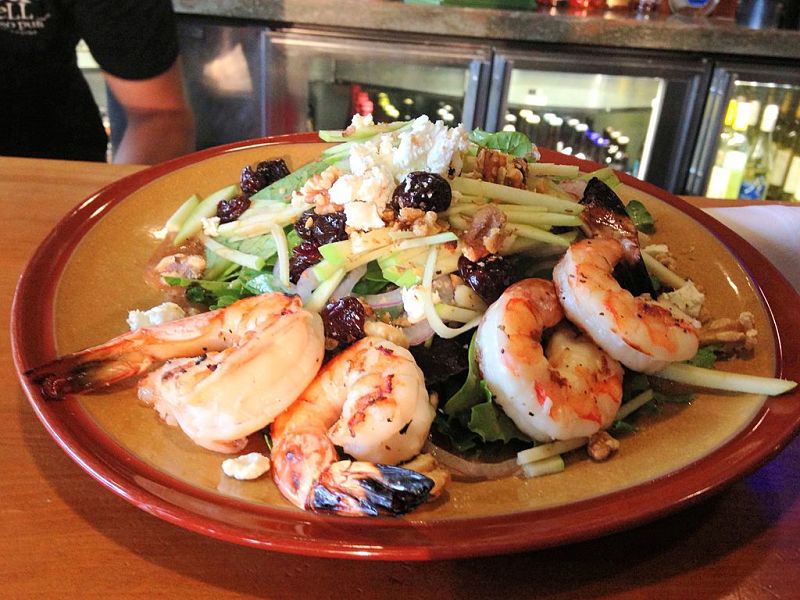
Prawns and shrimp dishes are a delight. Discover how quick easy it is to prepare delightful dishes that showcase the delights of the fresh product.